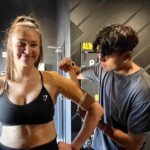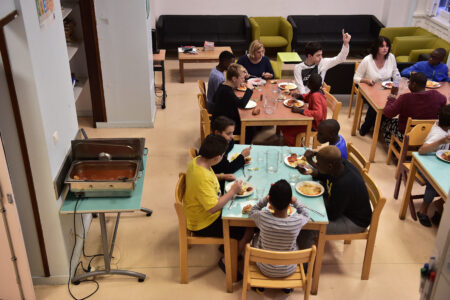
Science fairs are an exciting time of the year for K-12 students.
Usually held once a year or each semester, it gives students a chance to investigate and present something they are curious about in front of their friends, teachers, and judges.
From forming a hypothesis and conducting experiments to analysing results and drawing conclusions, the best projects for science fairs help students to think like scientists. These projects are important for building skills in problem-solving, creativity, and public speaking.
In fact, many famous scientists started with simple projects of their own — Albert Einstein once experimented with a compass when he was five years old, sparking his lifelong interest in physics and the mysteries of magnetism.
Although most of us won’t go on to win a Nobel Prize, science fairs are a great first step in learning to tackle challenges and present your findings clearly to others.
Some of the most unique science projects have explored the strangest questions, from testing whether people can tell the difference between dog and human food to studying how fast worms wiggle on different surfaces.
This kind of creativity highlights how science fairs encourage students to think outside the box, explore new ideas, and even challenge their scientific understanding.
It’s why choosing the right project can make a big difference.
Whether you’re interested in chemistry, biology, physics, or environmental science, choosing the best projects for science fairs will make the experience interesting and keep you engaged.
Worst projects for science fairs
Before we look at the best projects for science fairs, here are some of the worst.
Some science fair projects tend to fall short because they lack depth, originality, or sufficient scientific usage.
While these projects may be visually engaging, they don’t go beyond the basic level, leaving little room for analysis or deeper exploration. Judges prefer projects that involve unique questions, thoughtful experimentation, and a clear hypothesis, which these projects lack.
1. Baking Soda and Vinegar Volcano
This is a classic example that students often choose because it’s easy to execute and looks impressive.
However, since it only demonstrates a basic acid-base reaction, it doesn’t offer much opportunity for further scientific investigation.
This experiment has also been repeated countless times, so it doesn’t show originality, and its results are predictable. A more complex experiment would study reaction rates under different temperatures.
2. Mentos and Soda Explosion
Another popular choice is the Mentos and soda explosion experiment.
This project is entertaining but focuses on the spectacle without deeper scientific questioning. It limits students’ ability to analyse the results or draw meaningful conclusions.
3. Which Paper Towel is the Strongest
Though this experiment is popular, it lacks scientific investigation. A more engaging alternative could involve testing how environmental conditions, like moisture or temperature, affect the durability of paper towels.
Choosing a project with an interesting, open-ended question allows students to engage in scientific discovery, draw conclusions, and discover useful findings.
The best projects for science fairs, in order of grades
Grades K to 3
These are the best projects for science fairs for grades K to 3, as they introduce basic science concepts in a fun, hands-on way.
Each project is simple, visually engaging, and provides a clear outcome, which is perfect for young students.
1. Plant Growth Experiment
In this experiment, students learn about how plants grow and the effects of different liquids on their growth.
This experiment involves watering identical plants with different liquids like water, juice, and soda to see how each liquid affects the plant’s health.
2. Colour-changing Milk
The experiment calls for milk, food colouring, and a drop of dish soap to create swirling colours.
When you add soap to milk with food colouring, the soap disrupts the milk’s surface tension, causing the colours to mix and move.
3. Dancing Raisins
This experiment uses the bubbles in carbonated water to make raisins move up and down in a glass.
When raisins are placed in carbonated water, the bubbles attach to the rough surface of the raisins, causing them to float up. When the bubbles pop, the raisins sink again, creating a “dancing” effect. This experiment demonstrates the basic concepts of density and buoyancy in a fun way.
These projects are not only engaging but are designed for the developmental stage of K to 3 students. Each experiment uses everyday materials, making them accessible and providing young learners with opportunities to observe, hypothesise, and explore.
Grades 4 to 6
These are the best projects for science fairs for grades 4 to 6 as they introduce students to fundamental concepts in chemistry, physics, and environmental science in a hands-on and engaging way.
They involve real-world applications, allowing students to learn through trial and error.
1. Homemade Solar Oven
This project teaches students about solar energy by showing how sunlight can be harnessed for heating.
Using a pizza box, aluminium foil, and plastic wrap, students create a small solar oven that can be used to make s’mores. In this project, they will explore concepts such as renewable energy and environmental science.
2. Density Rainbow in a Jar
With this project, students learn about the concept of density by layering different liquids, such as honey, dish soap, water, and oil, in a clear jar.
Each liquid has a different density, forming a “rainbow” of colours when layered together.

The egg drop project is a science fair project that involves building a structure to protect an egg from breaking when dropped from a height. Source: AFP
3. Egg Drop Challenge
This experiment introduces students to concepts of force, impact, and engineering design.
Here, students create a protective container to prevent an egg from breaking when dropped from a height. It is an interactive project that encourages problem-solving and creativity as students experiment with different materials and designs to absorb shock and reduce impact.
These projects are ideal for grades 4 to 6 as they provide opportunities for critical thinking, exploration, and teamwork.
Each experiment builds on basic scientific principles, allowing students to test hypotheses, make adjustments, and see real results.
Grades 7 to 9
These are the best projects for science fairs for grades 7 to 9 as they are engaging, visually appealing, and help students develop data collection, analysis, and problem-solving skills. Each project is designed for students to explore a scientific principle.
1. Crystal-growing
In this project, students will experiment with forming crystals from salt or sugar solutions by adjusting variables like temperature, solution concentration, or type of solute.
As they observe the effects of these changes, they will learn about molecular structures and chemical bonding.
2. Battery Power
This experiment introduces students to the basic principles of chemistry and electricity.
Creating a lemon battery or experimenting with other citrus fruits helps them understand how electrochemical reactions work to generate power. By testing different fruits, they can analyse which uses the highest voltage, exploring factors like acidity and electrolyte concentration.
3. Water Filtration System
Building a water filtration system teaches students about environmental science and engineering principles.
By layering materials such as sand, gravel, and charcoal, students will create a basic filter to purify water. They can then test the filtered water for clarity or pH, which lets them evaluate its effectiveness.
Grades 10 to 12
These are the best projects for science fairs for grades 10 to 12 as they require advanced analytical skills, allow for more in-depth exploration, and highlight sustainability and renewable energy.

Students can build a wind turbine and experiment with rotor blade design to determine which is the most aerodynamic and produces the most energy. Source: AFP
1. Wind Turbine Efficiency
In this project, students explore how the design of turbine blades, such as shape, angle, and number, affects the amount of electricity generated.
This project combines principles of physics, engineering, and environmental science, helping students understand the mechanics behind renewable energy production. Building and testing different blade models allows them to experiment with other variables and collect data on energy output.
2. Biodegradability of materials
Testing the biodegradability of materials is a project that connects to environmental science and sustainability.
By comparing how different materials like plastic, cardboard, and plant-based plastics decompose in the soil, students can gain insight into waste management and the environmental impact of everyday items.
This project involves setting up samples in controlled soil environments and measuring their decomposition over time. It teaches students about chemical and biological breakdown processes while highlighting the importance of sustainable materials and gives them an understanding of environmental responsibility.










